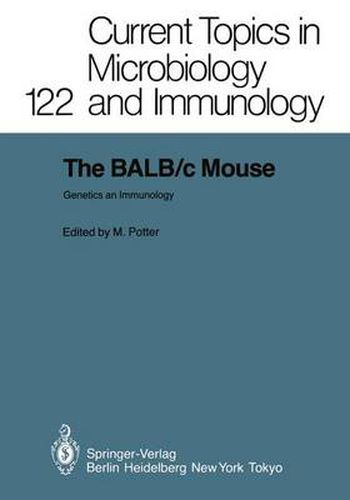Readings Newsletter
Become a Readings Member to make your shopping experience even easier.
Sign in or sign up for free!
You’re not far away from qualifying for FREE standard shipping within Australia
You’ve qualified for FREE standard shipping within Australia
The cart is loading…






This title is printed to order. This book may have been self-published. If so, we cannot guarantee the quality of the content. In the main most books will have gone through the editing process however some may not. We therefore suggest that you be aware of this before ordering this book. If in doubt check either the author or publisher’s details as we are unable to accept any returns unless they are faulty. Please contact us if you have any questions.
The mouse was first used in immunological research by Paul Ehrlich in 1891 in an extraordinary series of experiments on the maternal transfer of antitoxic immunity. A short 22 years later in 1913 Halsey Bagg acquired a stock of albino mice from a commercial dealer and used them in a series of experiments on learning. Because he was interested in the genetics of intelligence, Halsey Bagg began breeding a pedigreed line of these mice that were subsequently named for him - Bagg Albino. Though Halsey Bagg is not credited with initiating the inbred strains of mice, his stock curiously has played an indisputably important role. Bagg Albinos were progenitors of the present day BALB/c family of sublines - the subject of this book. They were also used as one of the parents in the development of inbred strains A, CBA and C3H, three other very famous strains. Today the BALB/c mouse is among the five most widely used inbred strains in biomedical research and a particular favorite in immunology and infectious disease research. The hallmark of the BALB/c response to so many kinds of infections is susceptibility and sometimes an exaggerated susceptibility, but this paradoxically is not associated with immunodeficiency as BALB/c is an excellent responder to immuni zation. These characteristics have made the BALB/c mouse a model for identifying genes that determine susceptibility to infectious and neoplastic diseases. In 1985 the laboratory BALB/c mouse became 72 years old. The current filial generations are somewhere around 350 generations [MURPHY].
$9.00 standard shipping within Australia
FREE standard shipping within Australia for orders over $100.00
Express & International shipping calculated at checkout
This title is printed to order. This book may have been self-published. If so, we cannot guarantee the quality of the content. In the main most books will have gone through the editing process however some may not. We therefore suggest that you be aware of this before ordering this book. If in doubt check either the author or publisher’s details as we are unable to accept any returns unless they are faulty. Please contact us if you have any questions.
The mouse was first used in immunological research by Paul Ehrlich in 1891 in an extraordinary series of experiments on the maternal transfer of antitoxic immunity. A short 22 years later in 1913 Halsey Bagg acquired a stock of albino mice from a commercial dealer and used them in a series of experiments on learning. Because he was interested in the genetics of intelligence, Halsey Bagg began breeding a pedigreed line of these mice that were subsequently named for him - Bagg Albino. Though Halsey Bagg is not credited with initiating the inbred strains of mice, his stock curiously has played an indisputably important role. Bagg Albinos were progenitors of the present day BALB/c family of sublines - the subject of this book. They were also used as one of the parents in the development of inbred strains A, CBA and C3H, three other very famous strains. Today the BALB/c mouse is among the five most widely used inbred strains in biomedical research and a particular favorite in immunology and infectious disease research. The hallmark of the BALB/c response to so many kinds of infections is susceptibility and sometimes an exaggerated susceptibility, but this paradoxically is not associated with immunodeficiency as BALB/c is an excellent responder to immuni zation. These characteristics have made the BALB/c mouse a model for identifying genes that determine susceptibility to infectious and neoplastic diseases. In 1985 the laboratory BALB/c mouse became 72 years old. The current filial generations are somewhere around 350 generations [MURPHY].